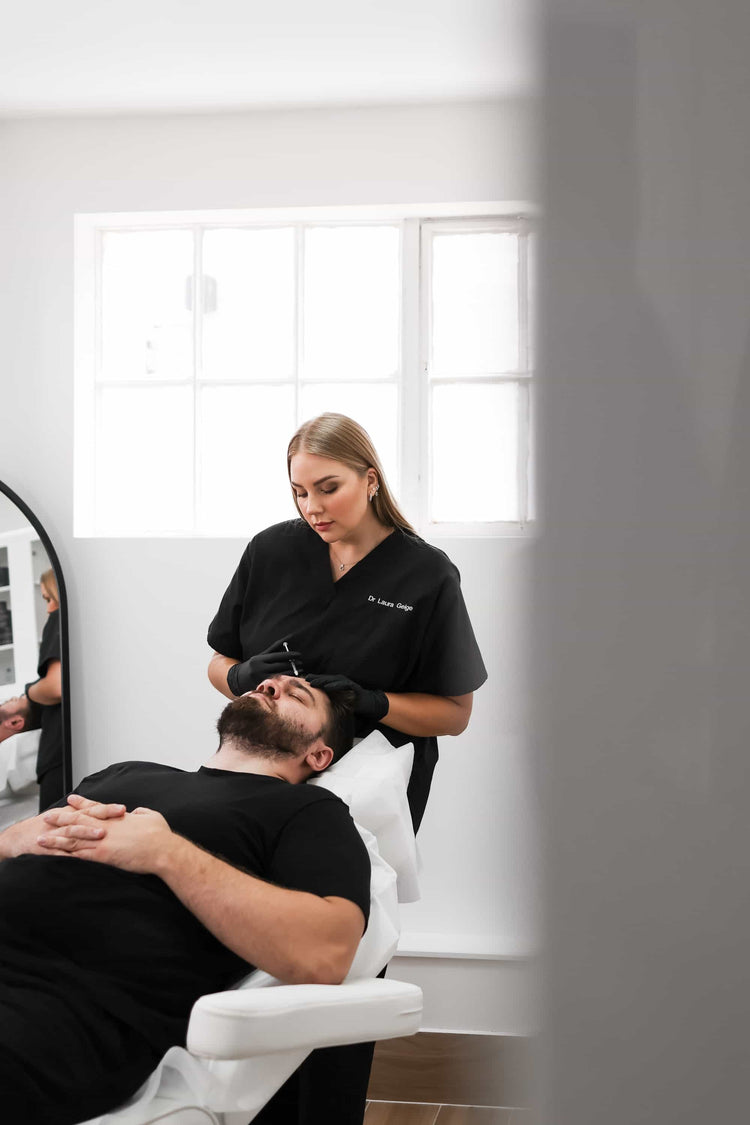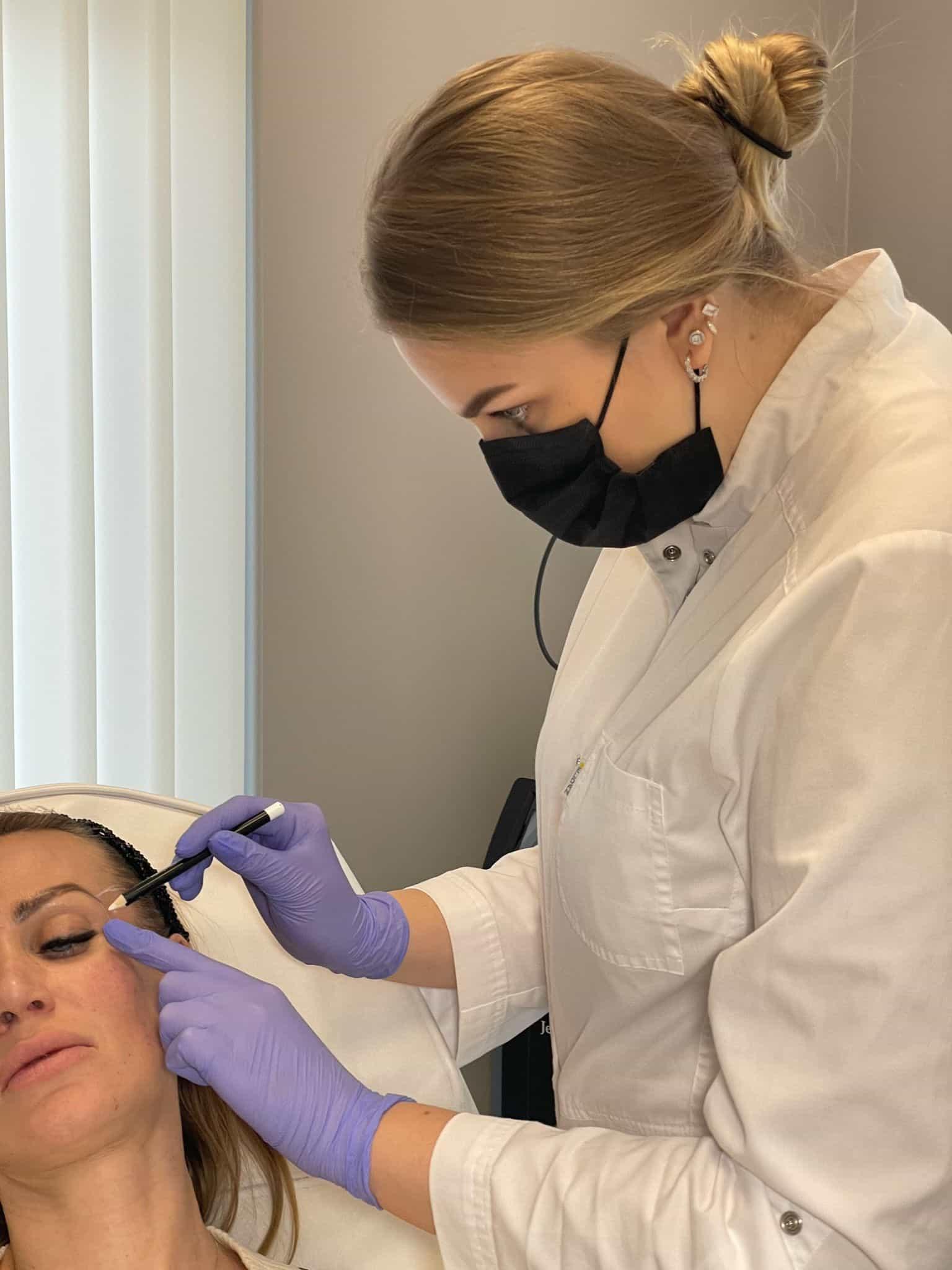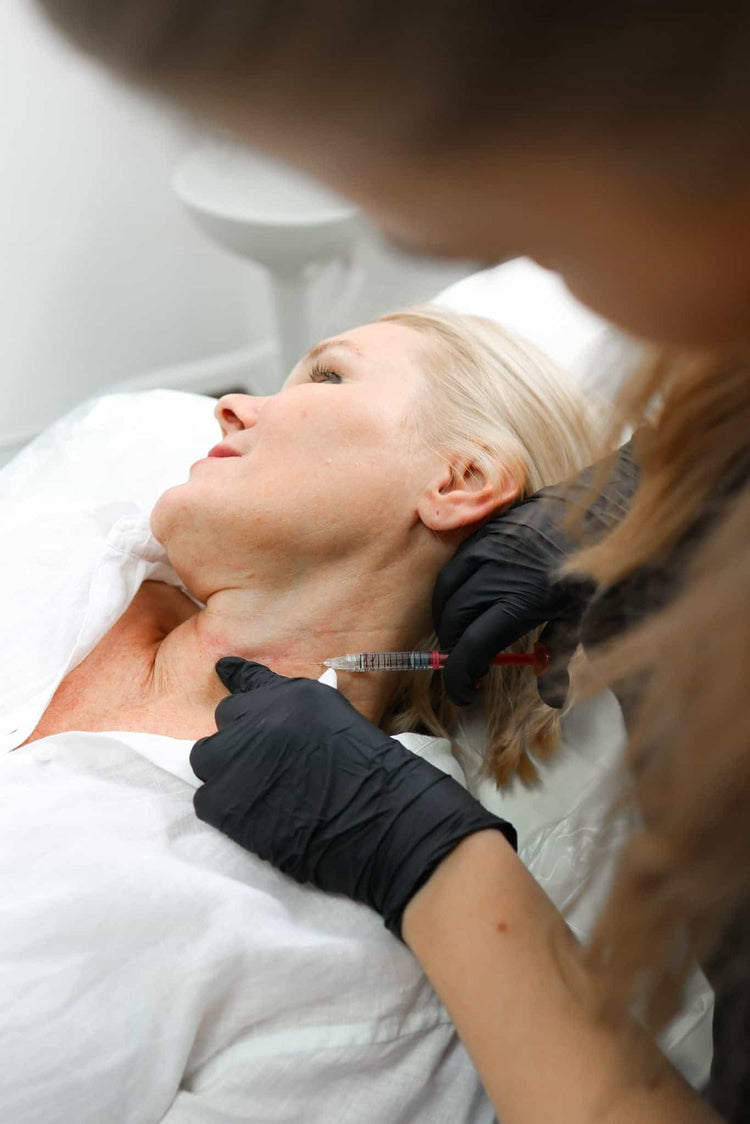The Key Differences Between Baby Botox And Dermal Fillers In Surrey
Baby Botox
Baby Botox has become increasingly popular, offering a subtle approach to achieving smoother skin and reducing the appearance of fine lines without drastically altering facial expressions. However, it’s not the only option for addressing wrinkles and enhancing features. Dermal fillers offer a different approach, plumping up areas like lips and cheeks to restore volume and create a fuller look.

What is it?
Baby Botox is a less-intense version of traditional Botox injections. Instead of paralyzing larger muscles to achieve dramatic smoothing, it uses smaller doses injected into specific facial muscles to soften the appearance of fine lines and wrinkles. This results in a more natural, refreshed look that retains your individual expression.
How does it work?
Baby Botox is a less-intense version of traditional Botox injections. Instead of paralyzing larger muscles to achieve dramatic smoothing, it uses smaller doses injected into specific facial muscles to soften the appearance of fine lines and wrinkles. This results in a more natural, refreshed look that retains your individual expression.
Here’s how Baby Botox works:
- Smaller Doses: Baby Botox utilizes a lower concentration of botulinum toxin compared to traditional Botox.
- Targeted Injection: The injections are carefully placed into specific muscles responsible for creating wrinkles, like the forehead lines (11s), crow’s feet, and perioral lines (smokers lines).
- Muscle Relaxation: The toxin temporarily blocks nerve signals to these muscles, reducing their ability to contract.
- Softening Appearance: This relaxation diminishes the appearance of wrinkles by smoothing out the skin’s surface.
Benefits
Baby Botox is a less-intense form of traditional Botox that uses smaller doses of botulinum toxin to soften the appearance of fine lines and wrinkles. Unlike traditional Botox, which can paralyze larger muscles for a more dramatic smoothing effect, Baby Botox targets specific facial muscles responsible for creating wrinkles. This results in a more subtle, natural-looking enhancement that retains your individual expression.
Baby Botox is a popular choice for those who want to minimize the appearance of fine lines without undergoing a drastic change in their facial expressions. It can be used to target various areas such as forehead lines (11s), crow’s feet, and perioral lines (smokers lines).
Some of the benefits of Baby Botox include:
- Natural-Looking Results: The subtle approach preserves your natural facial expressions.
- Less Downtime: Baby Botox requires less recovery time than traditional Botox, allowing you to return to your daily activities sooner.
- Preventive Effects: Baby Botox can help prevent the formation of deeper wrinkles by softening existing lines.
- Long-Lasting Results: While not as long-lasting as traditional Botox, Baby Botox typically lasts for three to four months.
Drawbacks
While Baby Botox offers numerous benefits, it’s essential to be aware of potential drawbacks. One concern is the limited duration of results. Since smaller doses are used, the effects tend to last shorter than traditional Botox, typically around three to four months. This means more frequent treatments are required to maintain the desired outcome.
Another drawback is that Baby Botox may not be as effective for deeper wrinkles or severe facial aging. Its subtle approach works best for fine lines and early signs of aging. For more pronounced wrinkles or loss of volume, dermal fillers might be a more suitable option.
Dermal Fillers
In the pursuit of youthful and refreshed skin, two popular non-surgical treatments have emerged: Baby Botox and dermal fillers. While both aim to enhance facial aesthetics, they achieve this through distinct mechanisms. Baby Botox focuses on minimizing fine lines and wrinkles with a less intense approach, while dermal fillers address volume loss by plumping up areas like lips and cheeks.
Types of dermal fillers
Dermal fillers are injectable substances used to add volume and fullness to the face. They are made from various materials, each with its own properties and applications.
Here are some of the most common types of dermal fillers:
- Hyaluronic Acid (HA) Fillers: HA is a natural substance found in the body that attracts and retains water. HA fillers are very versatile and can be used to plump lips, smooth wrinkles, enhance cheeks, and even correct jawline contours.
- Collagen Fillers: Collagen is another naturally occurring protein that provides structure and support to the skin. Collagen fillers are often used to restore volume in areas like the cheeks and under-eye hollows.
- Poly-Lactic Acid (PLA) Fillers: PLA is a synthetic biodegradable polymer that stimulates collagen production. These fillers provide long-lasting results, typically lasting 12 months or more.
- Calcium Hydroxylapatite (CaHA): This mineral filler is used to volumize deeper areas and address moderate to severe wrinkles.
How they work
Dermal fillers are injectable substances designed to add volume and fullness to various parts of the face. They are composed of different materials, each with unique properties and applications.
Hyaluronic acid (HA) is a natural substance found in the body that attracts and retains water. HA fillers are highly versatile and can be used to plump lips, smooth wrinkles, enhance cheeks, and even correct jawline contours.
Collagen is another naturally occurring protein that provides structure and support to the skin. Collagen fillers are often employed to restore volume in areas like the cheeks and under-eye hollows.
Poly-Lactic acid (PLA) is a synthetic biodegradable polymer that stimulates collagen production. These fillers provide long-lasting results, typically lasting 12 months or more.
Calcium hydroxylapatite (CaHA) is a mineral filler used to volumize deeper areas and address moderate to severe wrinkles.
Benefits
Dermal fillers are injectable substances designed to add volume and fullness to various parts of the face. They come in different formulations, each with unique properties tailored to specific aesthetic goals.
One key benefit of dermal fillers is their ability to restore lost volume, plumping up areas like lips, cheeks, and under-eye hollows, which can diminish with age. This helps create a more youthful and contoured appearance. Fillers can also smooth out wrinkles and folds by injecting substance beneath the skin, creating a plumper surface that minimizes the appearance of lines.
Dermal fillers provide noticeable and long-lasting results, often lasting for months to even years depending on the type of filler used. They offer a minimally invasive alternative to surgical procedures, with minimal downtime and recovery periods.

Drawbacks
While dermal fillers can offer significant aesthetic benefits, it’s crucial to be aware of potential drawbacks. One concern is the risk of bruising, swelling, or redness at the injection site, which typically subsides within a few days.
Another potential drawback is the possibility of an allergic reaction to the filler material. While rare, it’s essential to discuss any allergies or sensitivities with your injector beforehand.
It’s also important to remember that dermal fillers are not permanent. Over time, the body gradually absorbs the filler material, and touch-up treatments will be needed to maintain the desired results.
In some cases, fillers may migrate or clump together, leading to an unnatural appearance. This risk can be minimized by choosing a qualified and experienced injector who uses appropriate techniques and products.
Comparing Baby Botox and Dermal Fillers
When it comes to achieving smoother skin and enhancing facial features, two popular non-surgical treatments stand out: Baby Botox and dermal fillers. Both offer distinct approaches to addressing wrinkles and volume loss, catering to different aesthetic goals and individual needs.
Areas of application
Baby Botox and dermal fillers are both popular non-surgical treatments used to enhance facial aesthetics, but they work in different ways. Baby Botox uses smaller doses of botulinum toxin to temporarily relax specific muscles that cause fine lines, resulting in a subtle smoothing effect that preserves natural expressions. Dermal fillers, on the other hand, are injectable substances designed to add volume and fullness to various parts of the face. They can plump up lips, cheeks, and under-eye hollows, smooth wrinkles by injecting substance beneath the skin, and even correct jawline contours.
Baby Botox is ideal for addressing fine lines around the forehead, eyes (crow’s feet), and mouth, particularly in individuals who desire a natural-looking enhancement without drastic facial changes. Its benefits include minimal downtime and preventive effects against deeper wrinkle formation. Dermal fillers are more suitable for those seeking volume restoration or correction of deeper wrinkles.
They can be used to plump lips, enhance cheekbones, smooth nasolabial folds (smile lines), and address under-eye hollows. The duration of results for both treatments varies depending on individual factors and the specific product used. Baby Botox typically lasts three to four months, while dermal fillers can last anywhere from six months to two years or more.
Cost

Baby Botox and dermal fillers are both popular non-surgical cosmetic treatments used to enhance facial appearance. While they share the goal of improving skin texture and contour, their mechanisms and applications differ significantly.
Here’s a breakdown of the key differences:
- Target Areas: Baby Botox primarily targets fine lines and wrinkles by relaxing muscles responsible for their formation. Dermal fillers are used to add volume to areas like lips, cheeks, under-eye hollows, and to smooth deeper wrinkles.
- Mechanism of Action: Baby Botox utilizes a less intense dose of botulinum toxin to temporarily paralyze specific muscles, softening the appearance of wrinkles. Dermal fillers use injectable substances, often hyaluronic acid, to plump up areas and restore volume.
- Results Duration: Baby Botox typically lasts 3-4 months, while dermal filler results can last anywhere from 6 months to two years or more, depending on the type of filler used.
- Cost: The cost of Baby Botox and dermal fillers varies based on factors like the provider’s experience, the amount of product used, and the specific area being treated. Generally, Baby Botox tends to be less expensive per treatment compared to dermal fillers.
Duration of results
Baby Botox and dermal fillers are both popular non-surgical treatments for enhancing facial appearance, but they work in different ways and have varying durations of results.
Baby Botox uses a less intense dose of botulinum toxin to temporarily relax the muscles responsible for fine lines and wrinkles. This typically lasts 3 to 4 months.
Dermal fillers use substances like hyaluronic acid, collagen or poly-Lactic acid (PLA) to add volume to areas such as lips, cheeks, and under-eye hollows. Results with dermal fillers can last anywhere from six months to two years or more depending on the type of filler used.
Recovery time
Baby Botox and dermal fillers both offer effective ways to refresh your appearance, but they target different concerns and work in distinct ways. Understanding the nuances of each treatment allows you to make an informed decision about which is best suited for your goals.
Baby Botox is a subtle approach to minimizing fine lines and wrinkles by temporarily relaxing the muscles that cause them. Dermal fillers, on the other hand, add volume to specific areas, plumping up lips, cheeks, or smoothing out deeper wrinkles.
When it comes to recovery time, Baby Botox generally has less downtime. Most people experience minimal side effects like bruising or swelling that subside within a few days. Dermal filler results are immediate, but you may experience some swelling or tenderness that typically resolves within a week.
Book your Baby Botox treatment now at It’s Me & You Clinic with Dr. Laura Geige in Surrey
- What Does Lip Filler Look Like - May 19, 2025
- Weed Drinks In Hawaii HI - May 18, 2025
- Neck Line Filler Treatment Near Tilford, Surrey - May 18, 2025
